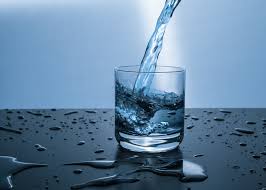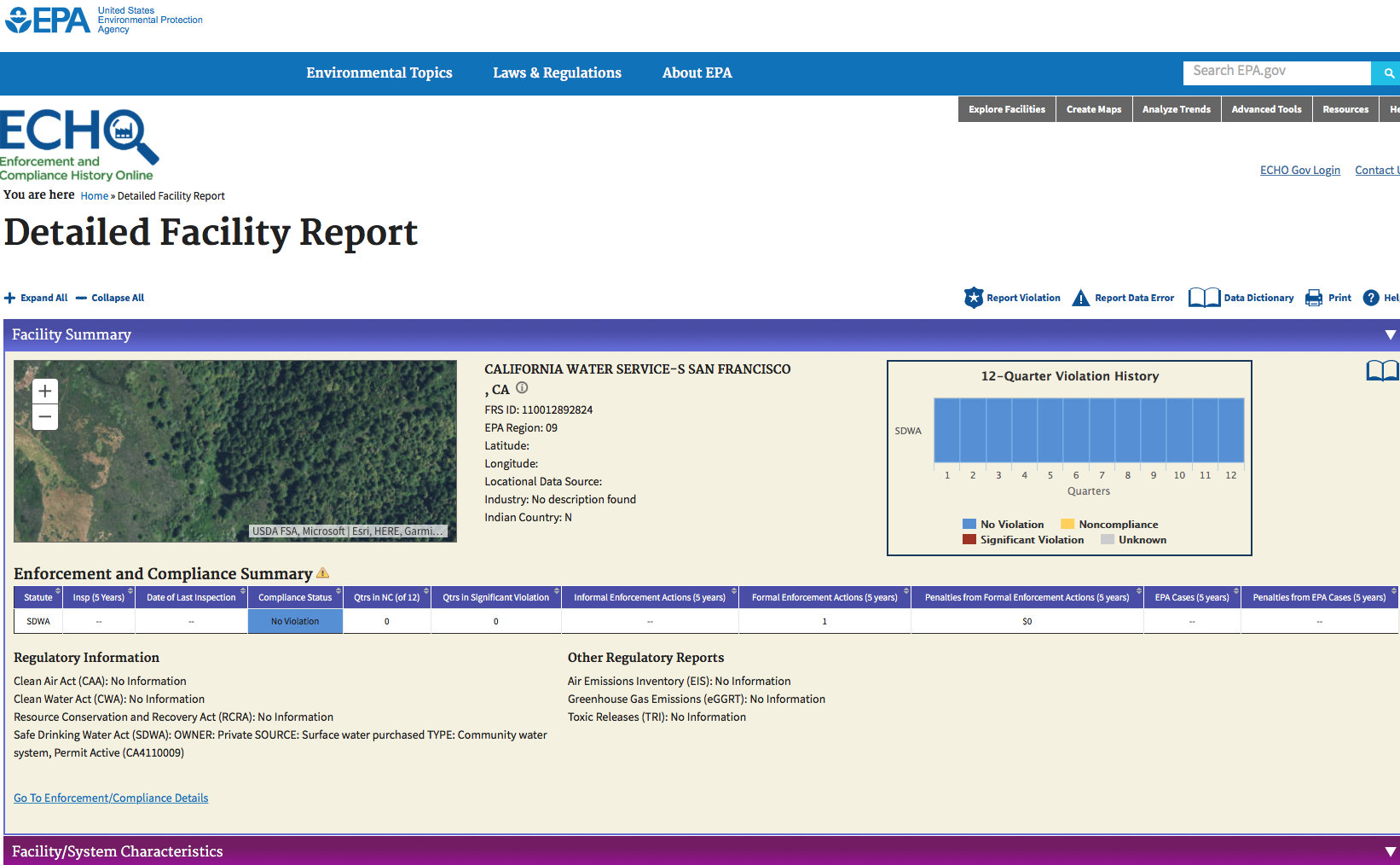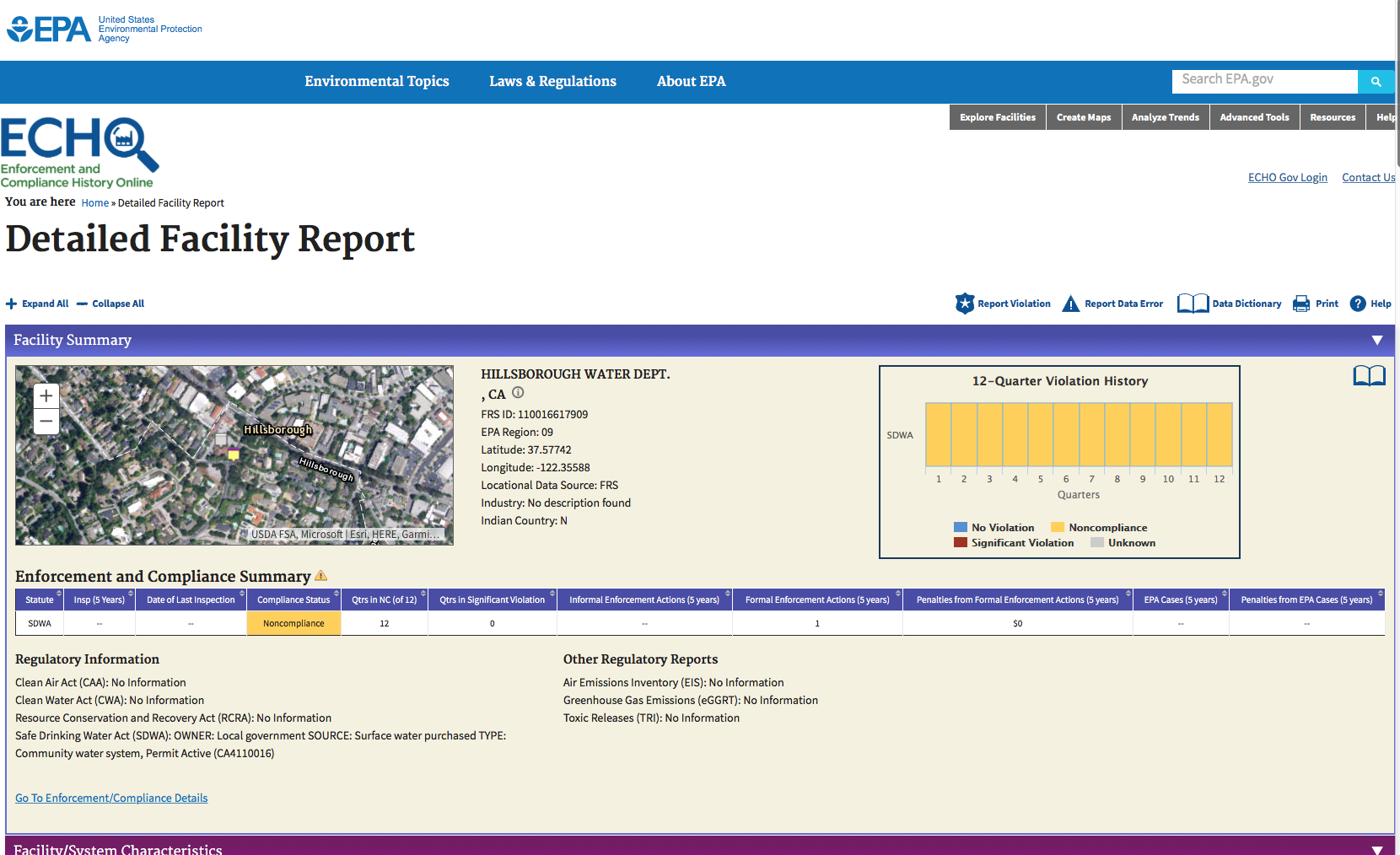South San Francisco, CA August 3, 2017

Calwater continues to pass water quality testing on state and federal tests
A South San Francisco neighbor recently contacted us after reviewing the report on water quality by Environment Working Group. “I just read the EWG’s tap water report for SSF and I was very disappointed in our water quality” they wrote “I am looking for water filter suggestions.”
Because water filters address different contaminates we checked the reports issued by EWG by using their interactive zip code map. Their report CLICK HERE shows 10 contaminants above their health guide lines which drew a concern. However, further reading the reports on their website shows our local water suppliers are in full compliance with our state and federal regulations as EWG states the following:
‘EWG’s drinking water quality report shows results of tests conducted by the water utility and provided to the Environmental Working Group by the California State Water Resources Control Board, as well as information from the U.S. EPA Enforcement and Compliance History database (ECHO). For the latest quarter assessed by the EPA (January to March 2017), tap water provided by this water utility was in compliance with federal health-based drinking water standards.
This water utility buys or otherwise receives some or all of its finished water from one or more public water utility systems. EWG research suggests that this utility purchases water from a single supplier, San Francisco Regional Water System. Tap water results displayed on the utility page show the water quality testing conducted by the original water supplier and this utility.’
To confirm this information is indeed correct, and to alleviate unfound concerns, we contacted Mike Utz, our Assistant District Manager of California Water Company Services Inc Bayshore District for clarification. His response is below:
CalWater would like to clarify the information in the Environmental Working Groups Report. Our water meets all of the standards set to protect customers’ health and safety by federal and state public health experts. These standards are called “maximum contaminant levels (MCLs).”
The data provided by EWG is based on public health goals (PHG), not MCLs. PHGs are not regulatory standards, but rather the level of a constituent below which there is no known concern to health over a lifetime of exposure. These goals are set without regard to cost or available detection and treatment technologies. In some cases, the technology may not even exist to treat water to the PHG.
California’s Office of Environmental Health Hazard Assessment (OEHHA), which is composed of toxicologists, epidemiologists, physicians, biostatisticians, and research scientists, confirms that: “As long as drinking water complies with all MCLs, it is considered safe to drink, even if some contaminants exceed PHG levels,” and “A PHG is NOT a boundary line between a ‘safe’ and ‘dangerous’ level of a contaminant.”
Additionally, the data in the EWG database includes raw, untreated source water, not just water that has been treated and is being delivered to customers. It also double-counts certain constituents.
Protecting our customers’ health and safety is our highest priority. We encourage our customers to review the annual Consumer Confidence Report for their water system, which includes every constituent detected in the water delivered to them.
With the recent trespassing onto CalWater’s property and graffiti to the storage tank in South San Francisco last month, we understand neighbors are keenly concerned about our water safety and quality, and rightly so. To CalWater’s credit, and with an abundance of caution, emergency advisories were immediately put in place for the Sunshine Gardens’ neighborhood that included door to door alerts in addition to contacting government agencies as required. Social media was also successfully used as CalWater continued to update the public and alerting neighbors when investigations proved the water source was resolved. While the tanks had not been breached and there had been no contamination, the tanks were drained, appropriately cleaned and refilled with water testing once again passing all state and federal regulations. In addition free bottled water was made available to those neighbors who were effected during the advisory.
South San Francisco residents are fortunate to have the quality of potable water that we enjoy because not every city in our region, state, or country has this access. The EPA (United States Environmental Protection Agency) monitors required reporting and makes the results public (CLICK HERE). While South San Francisco continues to receive excellent reports with no out of compliance marks, our neighboring town of Hillsborough has not been as fortunate with the EPA reporting non-compliance multiple quarters from 2014 – 2017. This comparison is merely to show that the strict regulations are not manipulated and one locality can have different concerns with their water than a neighboring City. This is a great resource if you would like to check water quality in different locations.
SSF CALWATER EPA REPORT BELOW

SSF water provided by Calwater remains in compliance with the US EPA
HILLSBOROUGH WATER DEPARTMENT EPA REPORT BELOW

The US EPA cited Hillsborough Water in non-compliance
Even with rigid testing and reporting there are some folks that use home filtration systems which is what brought us to this subject, our neighbor asking “I am looking for water filter suggestions.” The Environmental Working Group does offer some researched information on their website CLICK HERE for those interested in pursuing this including which filters might work best per contaminate.
If you have any concerns or questions about your water in South San Francisco please contact Calwater at 650/558-7800 or if you are in the Westborough Water District area please contact WWD at 650/589.1435.
What is a sf drink in the diabetes world
Assistant District Manager, Mike Utz of California Water Company Services Inc Bayshore District. While not wrong, that doesn’t provide the whole picture. Just because the utility abides by the MCLs set by the state guidelines, doesn’t mean it is safe. We have Public Health Goals (PHG) for a reason. According to our state government, The California Office of Environmental Health Hazard Assessment[1]:
“A PHG is the level of a chemical contaminant in drinking water that does not pose a significant risk to health. PHGs are not regulatory standards. However, state law requires SWRCB to set drinking water standards for chemical contaminants as close to the corresponding PHG as is economically and technologically feasible. In some cases, it may not be feasible for SWRCB to set the drinking water standard for a contaminant at the same level as the PHG. The technology to treat the chemicals may not be available, or the cost of treatment may be very high. SWRCB must consider these factors when developing a drinking water standard.”
And this is exactly what happened with one such water contaminant, Hexavalent Chromium (Chromium VI). If you and your readers would like to learn more about what’s in the SSF water supply, Calwater has the reports available at https://www.calwater.com/waterquality/water-quality-reports/bay/. If you check the 2017 report, this same year Mike provided you with the above response, you’ll see the column “SSF Supply” lists the Chromium range to be within the ND-21 range. However, 21 is extremely high and in fact on par with peak levels found in the Erin Brocovich scandal in Hinkley, CA. In fact, Hinkley had a PEAK of 20 ppb of Chromium VI[2] for which PG&E ended up settling a $300 million lawsuit. We used to have an MCL set for Hexavalent Chromium (Chromium VI), but it would appear that a judge invalidated that MCL because it wasn’t economically viable to comply[3].
So in short, Mike is correct and complying with MCLs, but that doesn’t mean this water is quality potable water or even safe for consumption. For those interested in removing Chromium VI from their water, options are limited. I too am in that boat and have been searching for options. From my research, it would appear that Reverse Osmosis and Ion Exchange systems are the only viable options for SSF. Reverse Osmosis (R.O.) works well for small, low-flow needs, such as drinking water. However, that leaves out the issue of ingesting the water soluble chromium ions via inhalation during showers. Really, there aren’t many great options for whole house Chromium filtration and R.O. for whole house, Point-of-Entry (POE) systems are extremely wasteful. The only option I have found thus far is to implement an Ion Exchange system to reduce the Chromium VI. This is the same type of system many water treatment plants use, but on a smaller scale. It essentially a water softener with resins that target Chromium VI.
I don’t work for any water treatment or filtration system companies and I cannot recommend any specific brands. But for those interested, Weak Base Anion resins or even some mixed bed deionization resins should do the trick. I hope this helps someone save a little time and health.
[1] https://oehha.ca.gov/water/public-health-goals-phgs
[2] https://en.wikipedia.org/wiki/Hinkley_groundwater_contamination#Groundwater_pollution
[3] https://www.waterboards.ca.gov/drinking_water/certlic/drinkingwater/Chromium6.html
We have been filtering our water for years. SSF’s water has an odor and filtration removes it.
Federal guidelines also allow a certain amount of dead insects in our food. WE can stop eating certain foods but we can’t live without water.
Our city’s wasteful spending habits could divert revenues and provide local water filtration. It wouldn’t surprise me if local people do this already at an annual cost.
When neighboring cities are protecting residents from the high cost of living in the bay area, our city hall is looking to spend spend bringing traffic, congestion, homelessness, etc. It raised local sales tax to pay for their new civic center when neighboring cities are forming alliances to keeps costs to a minimum. Buying bottled water has become a necessary expense.
Will city hall provide us with filtration? I am not going to hold my breath and continue to hold my nose.